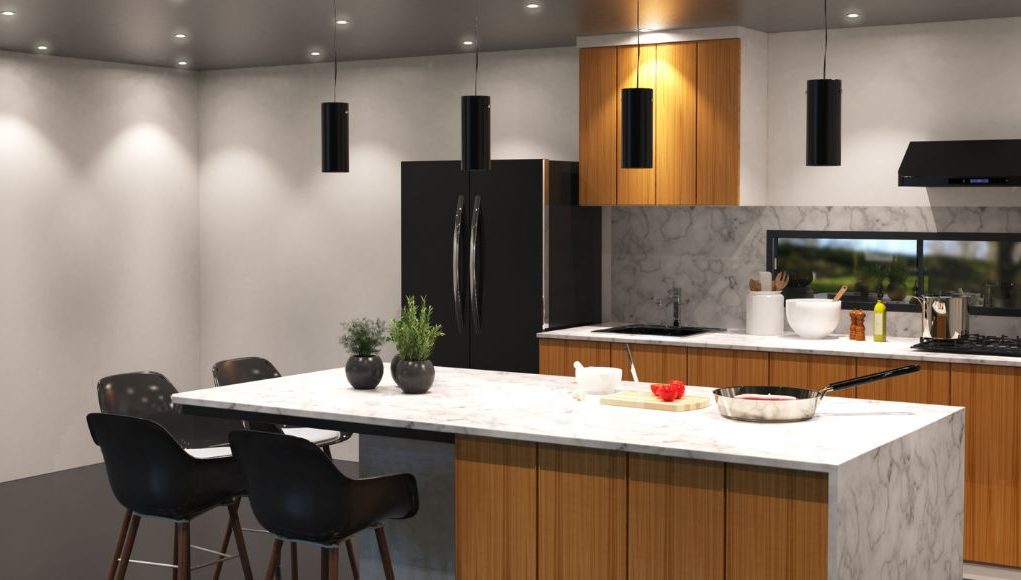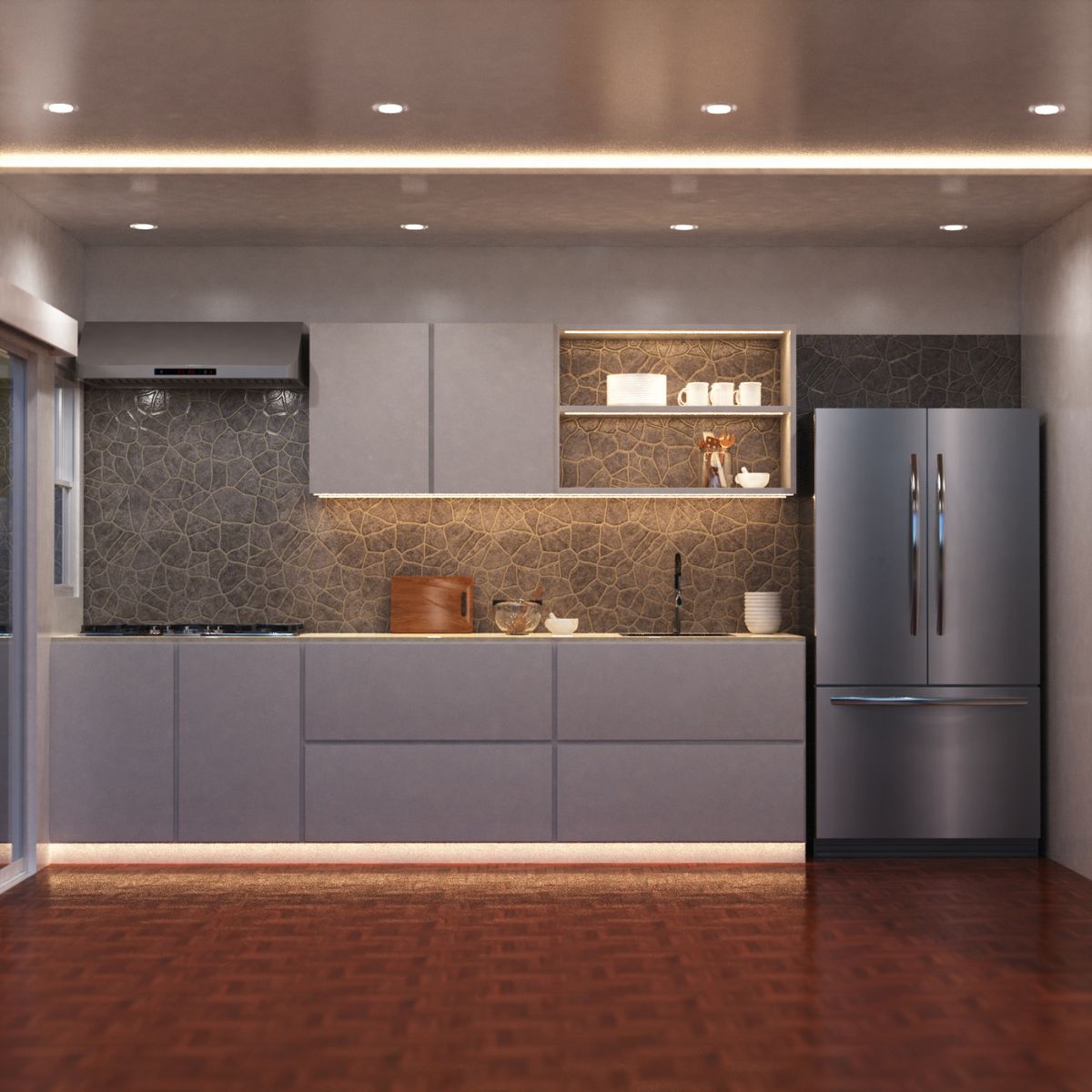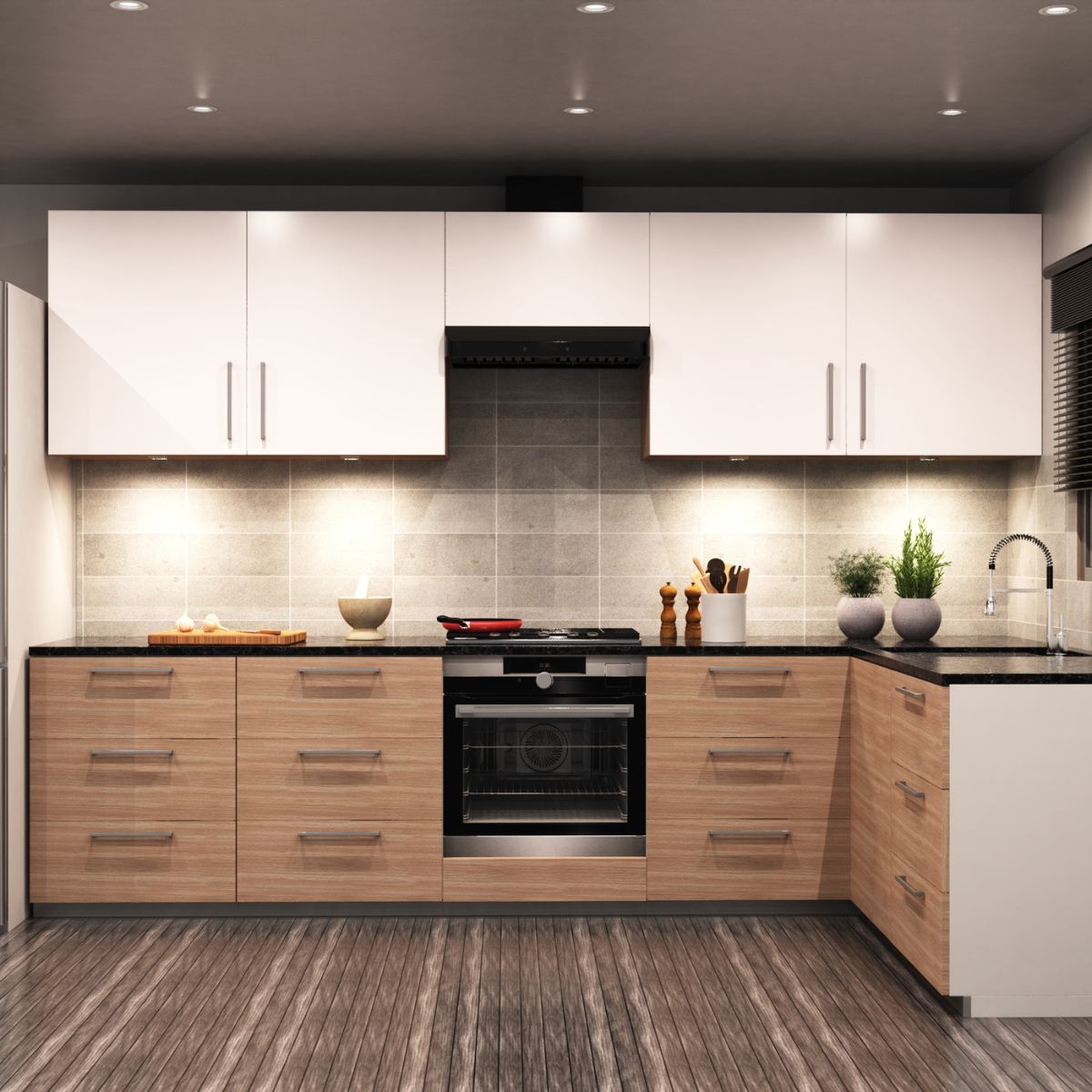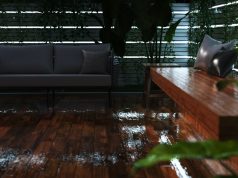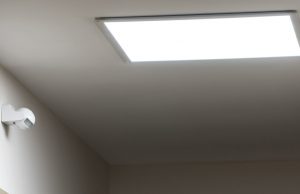When was the last time you thought about your kitchen lights?
When it flickered? What if we told you that your kitchen lights serve a purpose beyond just providing light? Kitchen lights are key players that transform how your space looks, feels, and functions.
Your lights can make your food prep easier, your dining more inviting, and highlight your kitchen’s features, or they can make every stay in your kitchen a bad experience. That’s why lighting is so important, especially layout-specific lights.
You see, not all kitchens are made equal. What works for another kitchen might not work for yours, and vice versa.
In this guide, we’ll walk you through smart kitchen lighting ideas tailored to different layouts, along with practical tips and design inspiration to make your kitchen both functional and beautiful.
The goal? To have a kitchen you want to stay in.
Understanding Kitchen Lighting Layers
Before diving into layout-specific ideas, it’s essential to understand the three layers of kitchen lighting: ambient, task, and accent lighting.
Each plays a unique role. Light layering is blending them to create a kitchen that’s bright, balanced, and full of character.
Ambient Lighting: The Foundation
Ambient lighting provides general illumination. This is the overall brightness that fills the room.
Think of it as your kitchen’s natural light substitute when the sun isn’t out. Common choices for ambient lighting include:
- Ceiling-mounted LED panels or LED downlights for even coverage
- Track lighting for flexible direction
- Flush or semi-flush ceiling fixtures in smaller kitchens to save space without sacrificing good lighting
Pro Tip: For open-plan spaces, use dimmable ceiling lights to adjust brightness between cooking and entertaining.
Task Lighting: Precision for Practicality
This is where function meets focus.
Task lighting brightens up areas where you need strong, shadow-free light for doing kitchen tasks, such as countertops, sinks, and cookers.
Best options include (among others):
- Under-cabinet LED strip lights for seamless counter illumination
- Recessed spotlights above islands or prep zones
- Pendant lights hung strategically over islands or worktops
Task lighting ensures you can chop, cook, and clean safely, while adding a stylish layer to your kitchen design.
Accent Lighting: The Finishing Touch
Accent lighting injects personality and depth into the space.
It highlights architectural details, textures, or display features such as open shelving or glass-front cabinets.
Examples include:
- LED strip lights along plinths or under counters
- Cove lighting above wall units for a soft halo effect
- Spotlights inside display cabinets
When these three layers (ambient, task, and accent) come together, your kitchen becomes more than just a workspace.
It becomes a dynamic, multi-functional environment that adapts to every occasion.
Lighting Ideas for Common Kitchen Layouts
Now that you have an overview of why proper kitchen lighting and layering are important for creating an adaptive kitchen space, it’s time we look at some inspirations.
Single-Wall Kitchens
For compact or minimalist homes, single-wall kitchens demand efficient lighting design.
With all units along one wall, it’s crucial to maximise both brightness and visual space.
Key Ideas:
- Install a row of recessed LED downlights across the ceiling to evenly spread light over the work area.
- Add under-cabinet lighting to eliminate shadows on the countertop. An LED strip in a slim aluminium channel gives a clean, professional look.
- If the space flows into a dining or living area, use warm, dimmable lights to maintain a cohesive ambience.
Pro Tip: Use reflective materials, such as glossy tiles or metallic finishes, to help bounce light around and make the room appear larger.
Galley Kitchens
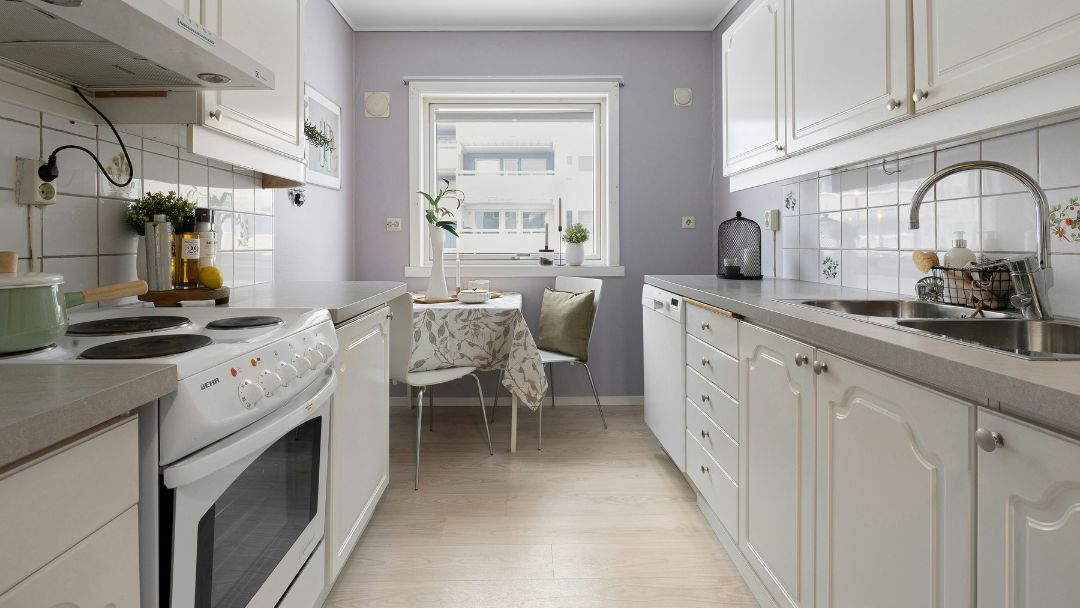
Galley kitchens are all about efficiency and flow. With parallel counters, lighting should be even and continuous along both sides to prevent dark spots.
Best Lighting Approaches:
- Run LED strips under both sets of wall cabinets for consistent task lighting.
- Use recessed ceiling lights placed evenly down the centre to distribute ambient light from end to end.
- For added visual depth, fit LED strips along plinths or toe kicks. This subtly defines the floor line and enhances the sense of space.
Bonus Tip: Choose cool white task lighting (around 4000K) for clarity during food prep, and pair it with warmer ambient lighting to soften the overall mood.
L-Shaped Kitchens
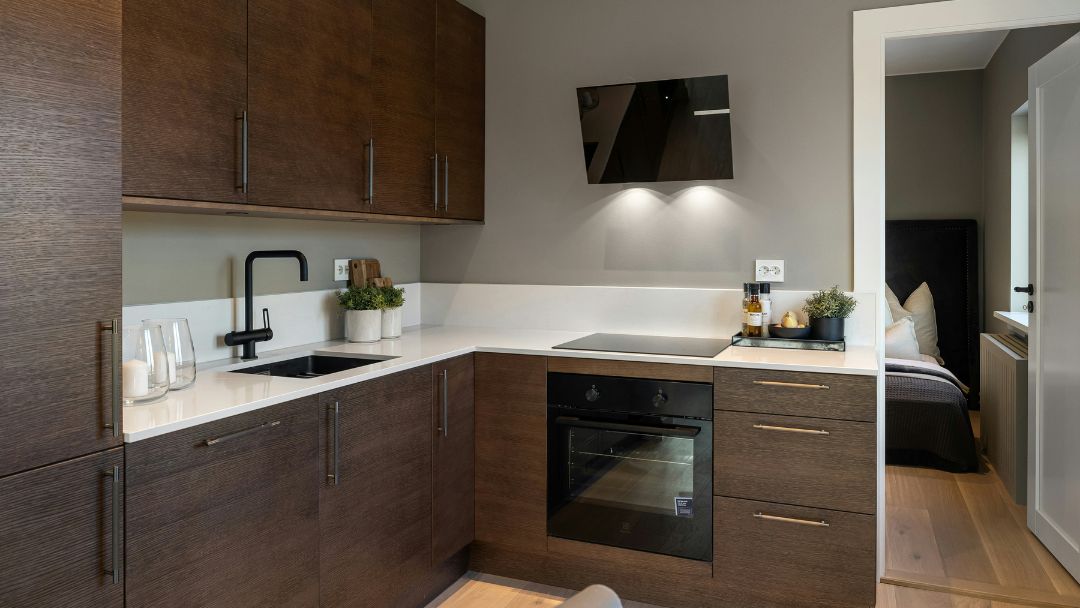
L-shaped kitchens usually have more open space that combines practicality with flexibility. This space often blends cooking, cleaning, and casual dining zones into one.
Effective lighting is essential to help define these areas without making the design look so overcrowded.
Here are some lighting tips:
- Use downlights along both arms of the “L” to cover the main working areas.
- Add pendant lights over a breakfast bar or corner dining area to distinguish it from the prep zone. (Also adds style and personality.)
- Incorporate LED strip lighting along splashbacks or plinths to create soft, indirect light that complements the main fixtures and creates depth.
U-Shaped Kitchens
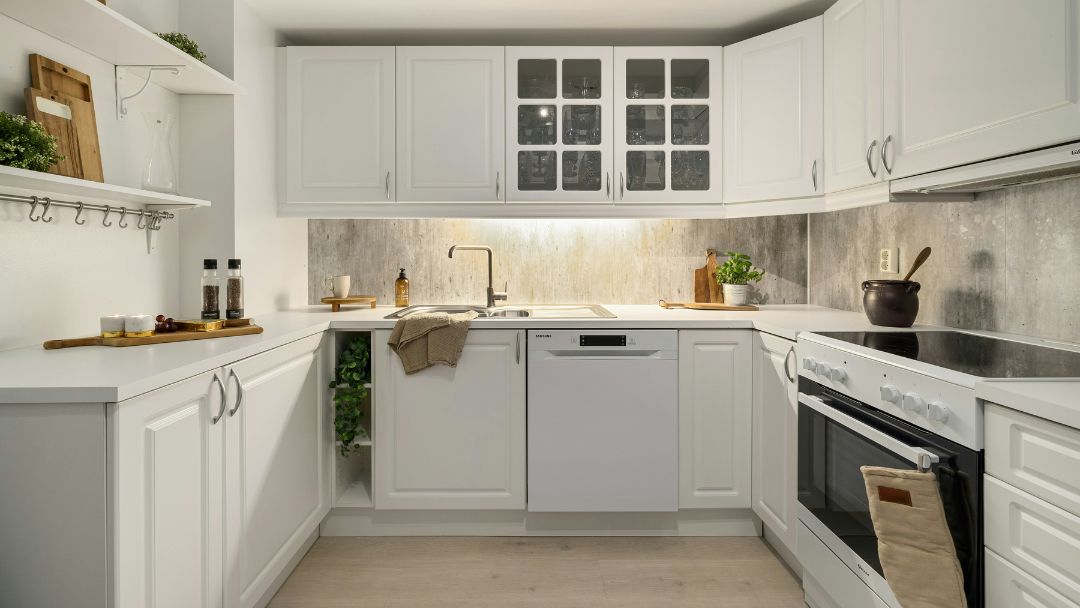
A U-shaped kitchen’s biggest strength (generous counter space) is also its weakness. Shadowed corners can easily develop if lighting isn’t layered properly.
The goal here is balanced illumination that reaches every surface.
Top Recommendations:
- Install evenly spaced ceiling downlights to brighten the whole layout.
- Add under-cabinet LED strips for shadow-free worktops. Add to ALL cabinets.
- Place directional spotlights or track lighting where the counters curve. Perfect for highlighting decor or making dark corners a little more inviting.
- Consider pendant lights over the central section or “peninsula” for visual interest.
Island Kitchens
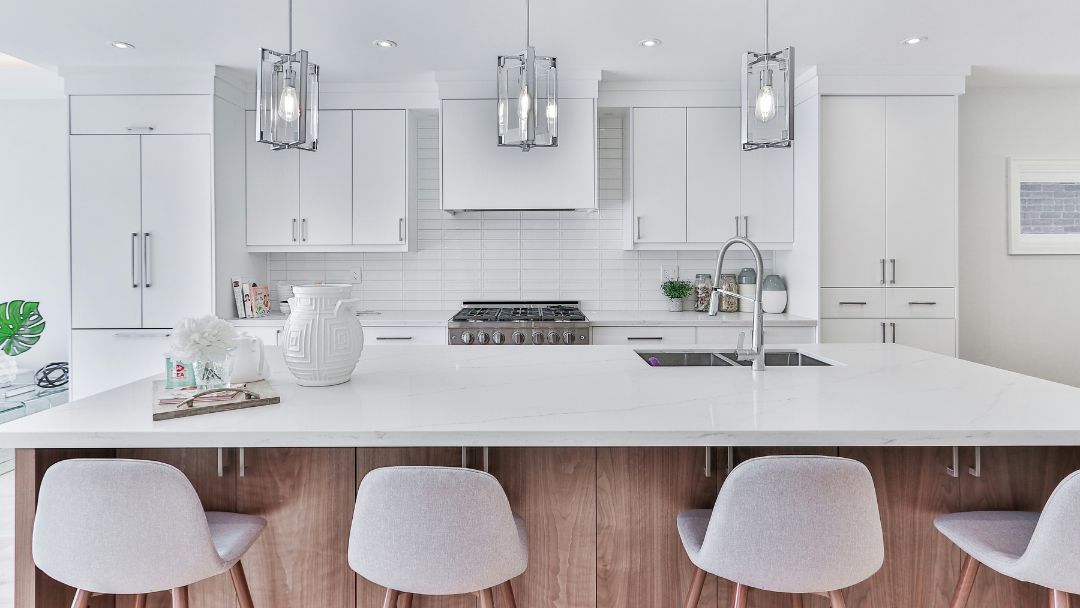
Islands are more common in modern kitchens. They’re the heart of both cooking and conversation.
That’s why lighting must strike the right balance between style and functionality.
Some design ideas:
- Make a statement with pendant lights. Choose two or three evenly spaced fixtures that suit your design theme. There are also some pendant lights with multiple lamps.
- Pair the overhead pendants with recessed ceiling lights or LED downlights to ensure full coverage during prep work.
- Add subtle LED strip lighting under the island’s plinth or worktop edge to create a floating effect that feels sleek and modern.
Tip for All Kitchen Types:
Consider smart LED controls that let you dim or change colour temperature. This allows you to adjust island lighting for cooking, entertaining, or late-night ambience with a single tap or voice command.
Accent & Decorative Lighting Ideas
This is where you get creative. This is where you play.
It’s your chance to add personality and visual drama. Yes, even in the most functional kitchen.
Inspiring Accent Ideas:
Plinth lighting: Install LED strips along the base of cabinets to give your kitchen a soft, modern glow. This is also great for evening ambience or when you’re sneaking for that midnight snack.
Cove lighting: Add LED strips above wall cabinets to create a subtle halo that draws the eye upward and makes your ceiling appear higher. If you’ve been thinking about what to use that space for, this is it.
Display cabinet lighting: Use small LED spotlights or short strips inside glass-front cupboards to showcase glassware, whisky collection, or decor.
Splashback illumination: Backlight a glass or acrylic splashback for a sleek, contemporary effect.
Mood Control:
This is a reminder that colour temperature matters.
Choose warm white (2700-3000K) for dining or relaxing, and cool white (4000-5000K) for detailed cooking tasks.
If you want full flexibility, try tunable white or RGBW LED strips. These let you adjust both brightness and tone to suit the moment, from energising daylight to soft evening hues.
Lighting Tips for Modern vs Traditional Kitchens
Modern Kitchens
Modern kitchens celebrate minimalism, clean lines, and integrated technology. Lighting here should feel sleek, seamless, and intentional.
- You can never go wrong with recessed downlights or hidden LED strips beneath cabinets and shelving.
- Choose cool white lighting to complement neutral colour schemes.
- Integrate smart controls for adjustable brightness and voice-activated controls.
- Highlight architectural elements like islands or floating shelves with concealed LED channels.
If you have an all-white kitchen, a matte black or brushed aluminium pendant can add an eye-catching contrast.
Traditional Kitchens
Classic or farmhouse kitchens benefit from warmth and texture in their lighting scheme. The goal here is a layered, inviting glow that enhances wood finishes and natural materials.
Some lighting design ideas:
- Use warmer light tones (2700-3000K) to complement traditional cabinetry.
- Combine pendant lights with wall sconces or ceiling lanterns for timeless charm.
- Incorporate visible bulbs or vintage-style fittings to complement the traditional design.
- Add subtle accent lighting, like LED strips under open shelving, for a gentle modern twist.
A bit of a warning: Overly harsh or cool light can flatten the warmth of wood and traditional tones.
Common Kitchen Lighting Mistakes to Avoid
Even the most stylish kitchens can lose their magic if the lighting isn’t planned correctly.
Here are the most common pitfalls in kitchen lighting, and how to steer clear of them:
1. Skipping Task Lighting
Relying solely on ceiling lights for meal prepping or cooking often leaves shadows where you need light the most: over countertops and sinks.
This poses safety risks and is overall not good for your well-being. Always layer with under-cabinet LEDs for task lighting.
2. Choosing the Wrong Colour Temperature
Too cool and your kitchen feels sterile; too warm and it looks dim or yellowed. Aim for balance, or use tunable LEDs for flexibility and easy adjustments.
3. Uneven Light Distribution
This is caused by poor spacing of your lights (especially the recessed/downlights), which creates dark patches in the space. Follow manufacturer spacing guides or consult a lighting designer for optimal placement.
4. Harsh Shadows from Pendants
Low-hanging pendants may look stylish but can cast shadows on worktops. Balance them with ambient light from above. That’s the beauty of layering your lights!
5. Neglecting Energy Efficiency
Traditional lights (like incandescents) might look good and nostalgic. But they’re power-thirsty beasts. Look for alternatives like LED filament bulbs and other LED lights.
LEDs are energy-saving, long-lasting, and have significantly lower maintenance.
6. Forgetting Dimmers
Dimming allows you to instantly shift from bright and practical to warm and cosy, perfect for open-plan living.
Pro Tip:
Lighting is best planned early in your kitchen design process. Wiring and fitting positions are much easier to adjust before cabinets and tiles are installed.
But that doesn’t mean that you can’t upgrade the lighting for your old kitchen. Upgrading your lights is actually the cheapest, easiest, and fastest way to level up your kitchen.
Conclusion
The secret ingredient for the perfect kitchen experience? Great lighting.
Kitchen lighting isn’t just about how bright a room looks, but about how it feels and functions throughout the day. A well-lit kitchen can elevate your entire home, blending beauty with usability in every detail.
Whether you’re designing from scratch or upgrading your current setup, thoughtful (and well-thought-out) lighting will help you craft a space that feels as good as it looks.
At Simple Lighting, we believe every kitchen deserves to shine… literally. Explore our wide range of LED strip lights, profiles, plinths, and other kitchen lighting solutions to bring your vision to life.


